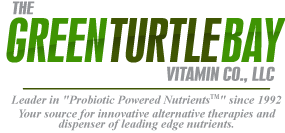|
Acerola: is the tart, cherry like fruit of a small tree (Malpighia glabra) of the West Indies and adjacent areas, used by supplement makers for its high concentration of vitamin C. It is also called Barbados cherry and Puerto Rican cherry. Most vitamin C supplements fortify acerola-derived C and other natural sources of C with synthetic C. It is sold in tablet form.
B Complex: This consists of B1 (thiamine), B2 (riboflavin), B3 (niacin), B6 (pyridoxine), B12 (cobalamine), biotin, choline, folic acid, inositol PABA, and pantothenic acid. They help to release energy from carbohydrates and are used in the development of red blood cells. This group promotes resistance to infection.
Beta carotene: is a vegetable-based precursor to vitamin A widely taken for its antioxidant, wound healing, vision enhancing, and cancer preventive properties. It is as effective as preformed, meat-based vitamin A, yet is safe and nontoxic. Beta carotene is found in high concentrations in dark leafy green vegetables and orange and yellow fruits and vegetables. It is the most bioavailable of the several related carotenoid plant pigments that act as precursors to vitamin A. Beta Carotene is a nutrient that the body converts to vitamin A. Unlike synthetic vitamin A, it is safe even in large amounts. It promotes good vision; helps form and maintain healthy skin and mucous membranes; boost the immune system. It’s sold as tablets and capsules. (See Vitamin A).
Bioflavonoids: are plant compounds found in citrus fruits, dark green leafy vegetables, and other typically vitamin C-rich foods. Bioflavonoids play an important role in healing capillaries and helping the body form collagen, which holds body tissue together. The bioflavonoids are also known collectively as vitamin P, or flavonoids. Some of the most common ones include hesperidin, quercetin, and rutin. They are found in high concentrations in certain herbs like gingko, hawthorn, and bilberry. Bioflavonoids exhibit a broad range of antioxidant activity and are taken to treat nosebleeds, bleeding gums, and a tendency to bruise. They are sometimes prescribed for allergies, viruses, and inflammations. Often combined in supplements with vitamin C, they’re typically found in tablet and capsule form.
Choline: is a nutrient that some nutritionists now consider to be a B-complex vitamin (though no RDA has been established). It plays a role in the metabolism of fats, the working of the nervous system, and the production of neurotransmitters that affect mood and emotions. Choline is synthesized in the body and is present in high concentrations in lecithin, a fatty acid found in egg yolks and soybeans. Choline is necessary for the healthy functioning of cells, nerves, and the brain, and deficiencies have been linked to certain neurologic disorders such as Parkinson’s disease and tardive dyskinesia that are characterized by convulsive muscular movements. It may help protect against heart disease and Alzheimer’s disease. Choline has been known to cause side effects like depression when taken in large doses. It is available as tablets, capsules, and liquids. (See Lecithin, under Essential Fatty Acids).
Folic acid: also known as folate and folacin, is a B-complex nutrient that plays a role in the production of red blood cells, DNA synthesis, and protein metabolism. Women in the earliest stages of pregnancy must be sure to get sufficient quantities, since folic acid is necessary for the fetus to develop nerve cells. The name “folic” is derived from the same Latin root as the word “foliage” and the nutrient is found in highest concentrations in leafy green vegetables like spinach, chard, and kale. Legumes, root vegetables, brewer’s yeast wheat germ, whole grains, fruits, and liver are also sources of folic acid. The adult RDA is 180-200 mcg. Deficiencies are common throughout the world, partly because the vitamin is easily lost in the refining, cooking, and storing of foods. Symptoms of a deficiency include anemia and neurological problems. Folic acid is used therapeutically to treat cervical dysplasia (a precancerous condition in women), depression and anxiety, and fatigue.
Niacin (Vitamin B3) Niacin (Vitamin B3) helps the body produce energy, metabolize fats and carbohydrates, and manufacture fatty acids and sex and adrenal hormones. A deficiency causes pellagra, characterized by rough, cracked skin and diarrhea. Niacin is found in high amounts in brewer’s yeast, peanuts and other legumes, sesame seeds, whole grains, fish and meats. The RDA is 19 mg. Therapeutically, it is used in the treatment of schizophrenia, high blood pressure and blood cholesterol, arthritis, Raynaud’s disease, and lack of blood circulation to the extremities. It comes in two forms, nicotinic acid and niacinamide. The latter is sometimes referred to as “flush-free” niacin, since unlike nicotinic acid, niacinamide taken in excess of 50-100 mg at one time won’t cause a temporary flushing of the skin. Doses in excess of 250 mg daily should be monitored by a physician.
Vitamin A is a fat-soluble micronutrient essential for healthy vision, cell reproduction, wound healing, immunity, and other crucial bodily functions. The U.S. RDA is 5,000 IU. Vitamin A is also a potent antioxidant. Studies have confirmed that it can help treat or prevent cancer and that it improves resistance to infection. Vitamin A derivatives are used to renew aged skin and treat acne. In its preformed state it is found in highest concentration in meats, though the plant-based precursor beta carotene is as effective and totally nontoxic. Taking high doses of preformed A can allow it to accumulate in the body and cause adverse health effects. It comes in tablets and capsules. (See Beta Carotene).
Vitamin B3 (see Niacin)
Vitamin B6 is a B-complex micronutrient, also known as pyridoxine, that boosts immunity, protects against nervous disorders, helps produce red blood cells, and plays an important role in hormone balance. The adult RDA is 1.5-2.2 mg. B6 is concentrated in meats and whole grains. It may help regulate eye pressure, alleviate fatigue, and cure carpal tunnel syndrome. B6 is an important vitamin for healthy bioelectric functioning of the central nervous system. It plays a role in the metabolism of the neurotransmitters norepinephrine and acetylcholine, which may inhibit certain types of seizures. B6 also helps maintain a proper balance of sodium, potassium, and magnesium. Daily dosages in the 500 mg range may be toxic for some people. It comes in tablets and capsules.
Vitamin B12: or cobalamin, unlike the other water-soluble B vitamins, is actually stored well in the body. The adult RDA is 2 mcg. B12 is found in animal products like meat, milk, and eggs. Vegetarian sources can provide some B12 (principally tempeh, sea vegetables, brewer’s yeast, and mushrooms), but are unreliable, and strict vegetarians are at risk of deficiency. B12 aids in energy production from fats and carbohydrates and in the production of amino acids. It also plays a role in nerve building; deficiency causes neurological problems and confusion, depression, and memory loss. B12 deficiency in the elderly has been linked to Alzheimer’s disease. B12 supplementation helps treat fatigue (even with no evidence of a deficiency), depression, and infertility. Some conditions respond only to injected B12, available from medical practitioners. B12 comes in capsules.
Vitamin C: or acid, is the most widely taken vitamin in supplement form. The adult RDA is 60-95 mg. Vitamin C helps protect the nerves, glands, joints and connective tissues from oxidation and aids in the absorption of iron. Some research indicates it strengthens the immune system. It is concentrated in certain fruits and dark leafy green vegetables. It is frequently used to boost the immune system and reduce the symptoms of colds, asthma, and allergies. It also strengthens blood vessels, helps the body resist infection, and plays a crucial role in the healing of wounds, broken bones, and surgical operations. It can be made into a paste and applied topically to kill viruses that cause warts and other skin problems, to relieve pain and inflammation of burns and stings, and to lessen the risk of infection. Vitamin C supplements are inexpensive, widely available, and nontoxic (though pregnant women should avoid megadoses in the 3-6 g range). It comes in powders, tablets, and capsules.
Vitamin D: This promotes strong bones and teeth. It is necessary for the absorption of calcium.
Vitamin E like vitamin C, is a powerful antioxidant nutrient that protects the body against the harmful effects of free radicals, unstable particles in the body that have been implicated in problems ranging from cancer to the effects of aging. The RDA is 30 IU. Food sources include vegetable oils, wheat germ, nuts, seeds, and whole grains. Vitamin E may also promote virility and protect against heart disease. Vitamin E helps the heart to function and promotes the use of fatty acids. It helps eliminate exercise cramps and nighttime leg cramps. Applied topically (break open capsules), it boosts the healing of burns, canker sores, and diaper rashes, and prevents scarring. It is sold as a liquid and in dry an oil-filled capsules.
Vitamin PQQ: (Pyrroloquinoline quinone) is the first new vitamin in 55 years. PQQ, an element first discovered in 1979 isolated from bacteria, has now been classified as a vitamin making it the first new vitamin to be discovered since vitamin B12 in 1948. A new member of the B vitamin family, PQQ has been identified as an important player in improving reproductive performance in mammals. In a report in the April 2003 issue of Nature (2003, vol. 422 (6934):832), researchers discovered mice fed a PQQ-deficient diet grew slower, had more fragile skin, reduced immune responseees, and did not reproduce well. For more information, visit http://www.nature.com
|

